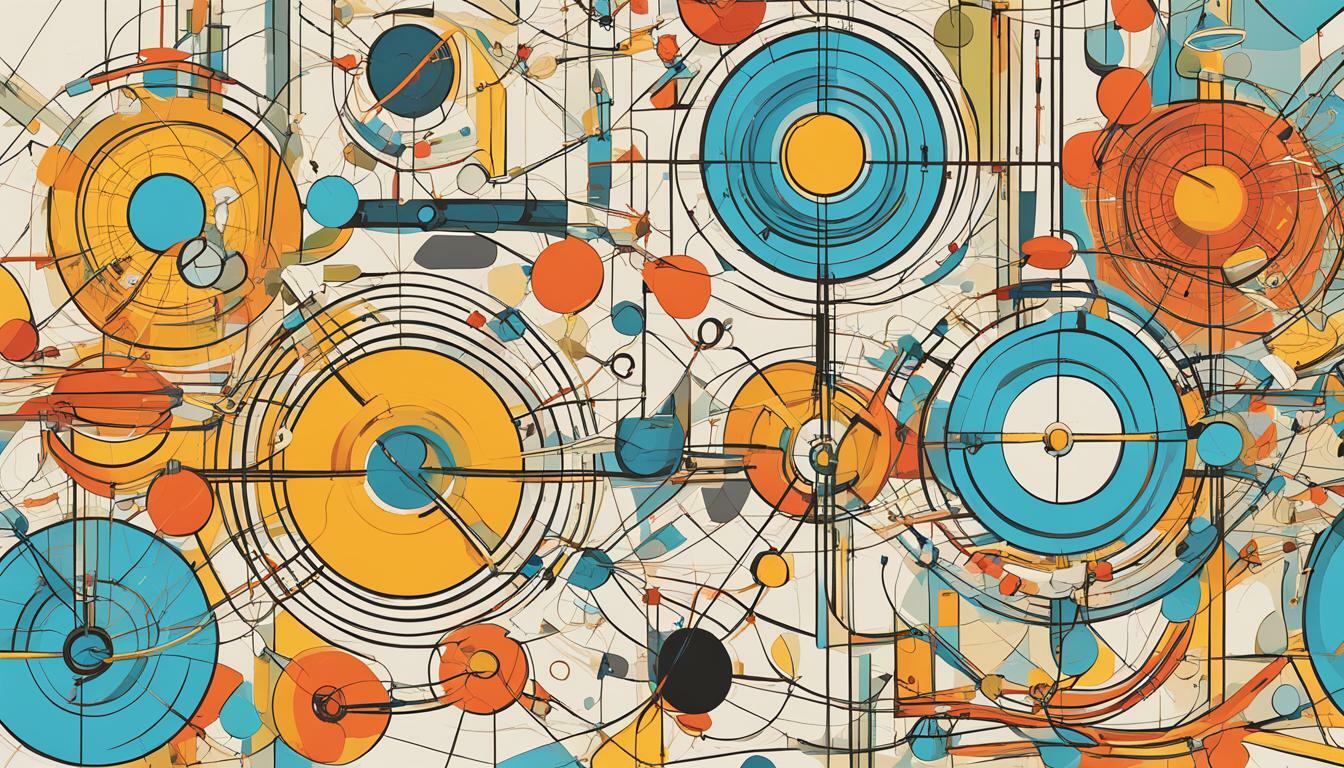
In the world of software engineering, effective communication is paramount. The ability of objects to communicate and interact with each other can greatly impact the quality and functionality of the final software product.
That’s where the Mediator and Chain of Responsibility design patterns come in. These concepts can enhance object communication, making software development more efficient and effective.
In this article, we will explore the Mediator and Chain of Responsibility patterns and their role in software engineering. We will discuss the challenges of object communication, the benefits of using these patterns, and how they can be combined to create even more robust solutions. So, let’s dive in!
Key Takeaways:
- Effective communication between objects is a crucial aspect of software development.
- The Mediator and Chain of Responsibility design patterns can enhance object communication.
- Understanding these patterns can lead to more efficient and effective software development.
- Combining these patterns can create even more robust solutions.
Understanding Object Communication in Software Development
Object communication is a fundamental concept in software development that refers to the exchange of information between objects. In object-oriented programming, software is designed as a collection of interacting objects, each with its own state and behavior. Effective communication between these objects is crucial for building robust and scalable software solutions.
However, implementing object communication is not always straightforward. There are many challenges to consider, such as how to ensure objects can communicate securely and efficiently, how to handle errors and exceptions, and how to maintain flexibility and maintainability in the codebase.
Software developers must carefully consider the design of object communication in their applications to ensure they meet these challenges and create reliable software. By doing so, developers can improve the overall quality of their software and create solutions that meet the needs of their users.
Introduction to Mediator Design Pattern
In object-oriented programming, the Mediator design pattern is a valuable tool for enhancing object communication. This design pattern promotes loose coupling between objects, allowing them to communicate more efficiently and effectively. The Mediator pattern enables objects to communicate with each other through a mediator object, rather than directly. This mediator object acts as an intermediary, facilitating communication between objects without the objects having to be aware of each other’s existence.
By utilizing the Mediator pattern, software developers can design applications that are more modular, flexible, and maintainable. The Mediator pattern promotes reusability of objects and enables developers to create new objects without having to worry about how they will interact with existing objects. This design pattern is particularly useful in complex applications with large numbers of objects, where traditional communication methods can quickly become unwieldy and difficult to manage.
The Mediator design pattern is a widely used and well-established concept in software engineering and design pattern literature. It is a powerful tool that can greatly enhance object communication and improve the overall quality of software applications.
Exploring the Chain of Responsibility Design Pattern
In object-oriented programming, the Chain of Responsibility design pattern is a behavioral pattern that allows objects to pass requests along a chain of handlers until one of them handles the request. The benefit of this pattern is its flexibility and maintainability, as it allows you to add or remove handlers without affecting the rest of the system.
The Chain of Responsibility pattern consists of a sender and a chain of objects that handle the requests. Each object in the chain has a reference to the next object in the chain. When the sender issues a request, it is first handled by the first object in the chain. If the object can handle the request, it does so and the process ends. If not, it passes the request to the next object in the chain, continuing until the request is handled or the end of the chain is reached.
The Chain of Responsibility pattern is often used in GUI applications, where different objects handle different events. For example, a button click event could be handled by the button object itself, but if the button is disabled, the event could be passed to a parent object to handle it instead.
Overall, the Chain of Responsibility pattern is a useful tool in object-oriented programming, enabling you to write more flexible and maintainable code.
Combining Mediator and Chain of Responsibility for Enhanced Object Communication
By combining the Mediator and Chain of Responsibility design patterns, software developers can create robust and scalable solutions that enhance object communication. The Mediator pattern acts as the intermediary between objects, while the Chain of Responsibility pattern enables objects to pass requests along a chain.
When used together, the Mediator and Chain of Responsibility patterns enhance communication between objects by simplifying the interactions between them. The Mediator pattern reduces direct coupling between objects, while the Chain of Responsibility pattern enables objects to handle requests in a flexible and maintainable way.
In practical terms, combining these two patterns can lead to more efficient and modular code, as well as reduced duplication and increased code reusability. This translates to faster development times, easier maintenance, and fewer bugs.
For example, a software system that needs to manage user authentication and authorization can use the Mediator pattern to handle user requests and the Chain of Responsibility pattern to enable different objects to handle different types of requests. This results in a more streamlined and efficient authentication and authorization process.
In conclusion, the Mediator and Chain of Responsibility patterns are powerful tools in enhancing object communication in software development. By mastering these patterns and applying them strategically, developers can create more efficient, scalable, and maintainable software solutions.
Conclusion
In conclusion, mastering the Mediator and Chain of Responsibility patterns is essential for enhancing object communication in software development. By understanding the challenges of object communication and applying these design patterns, developers can create robust, scalable, and maintainable software solutions.
The Mediator pattern enables objects to communicate with each other through a central mediator, reducing dependencies and improving flexibility. On the other hand, the Chain of Responsibility pattern allows requests to be passed along a chain of objects, providing a modular and scalable approach to handling requests.
By combining these two patterns, developers can create even more sophisticated communication models that further enhance object communication. In doing so, they can create software solutions that are both efficient and maintainable in the long run.
It is important for developers to continually explore and master these patterns to stay ahead of the game in software development. By doing so, they can create solutions that not only meet client needs but also exceed their expectations.
In conclusion, mastering the Mediator and Chain of Responsibility patterns is a critical aspect of software development that can take a developer’s skills to the next level. So why not start exploring these patterns today and take your projects to the next level?
FAQ
Q: What is the Mediator design pattern?
A: The Mediator design pattern is a behavioral design pattern that promotes loose coupling and enhances object communication. It enables objects to communicate with each other through a central mediator object, rather than directly. This pattern improves the flexibility, reusability, and maintainability of software systems.
Q: How does the Chain of Responsibility pattern enhance object communication?
A: The Chain of Responsibility pattern allows objects to pass requests along a chain of potential handlers until one of them handles the request. This pattern enhances object communication by decoupling senders and receivers, giving more flexibility to dynamically assign responsibilities and enable multiple objects to handle a request.
Q: Can the Mediator and Chain of Responsibility patterns be used together?
A: Yes, the Mediator and Chain of Responsibility patterns can be combined to create even more powerful solutions for object communication. By using the Mediator pattern as the central coordinator and the Chain of Responsibility pattern to handle specific requests within the mediator, we can create a robust and scalable system.
Q: What are the benefits of enhancing object communication?
A: Enhancing object communication improves software design and development in several ways. It promotes loose coupling between objects, making the system more flexible and maintainable. It also reduces dependencies and simplifies code, leading to improved reusability and testability. Additionally, effective object communication enhances collaboration and reduces the risk of communication-related bugs.
Q: How can I apply the Mediator and Chain of Responsibility patterns in my projects?
A: To apply these patterns, start by identifying the communication challenges in your system and determine if the Mediator and Chain of Responsibility patterns can help address them. Study the principles and implementation details of these patterns and identify the appropriate objects and responsibilities to be assigned. Finally, refactor your codebase to incorporate the patterns, ensuring proper encapsulation and decoupling for enhanced object communication.







